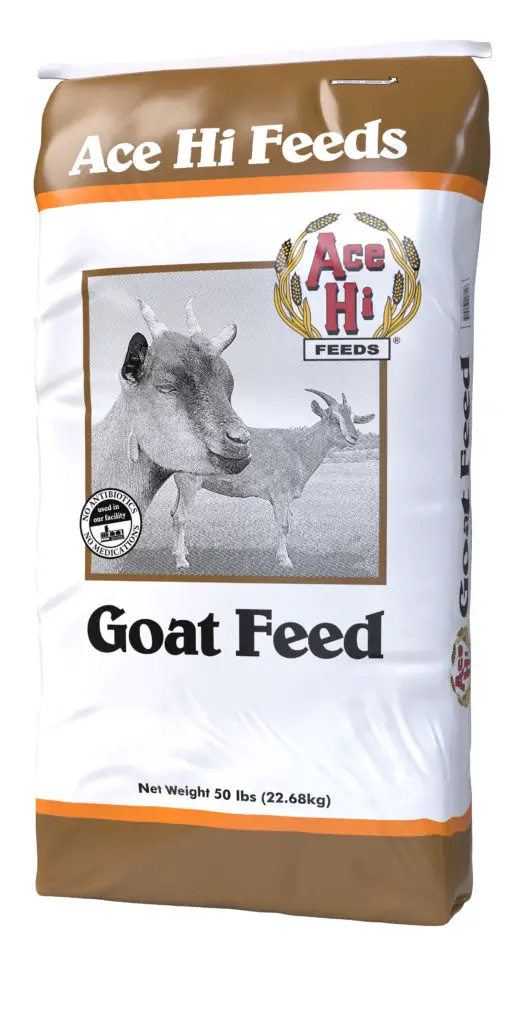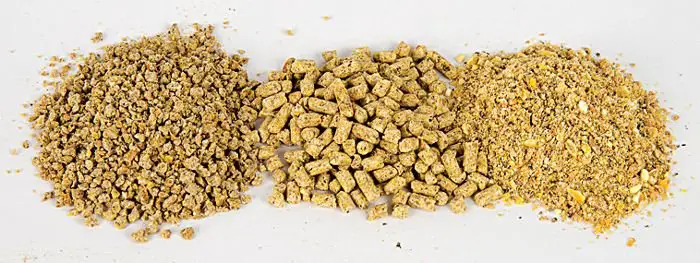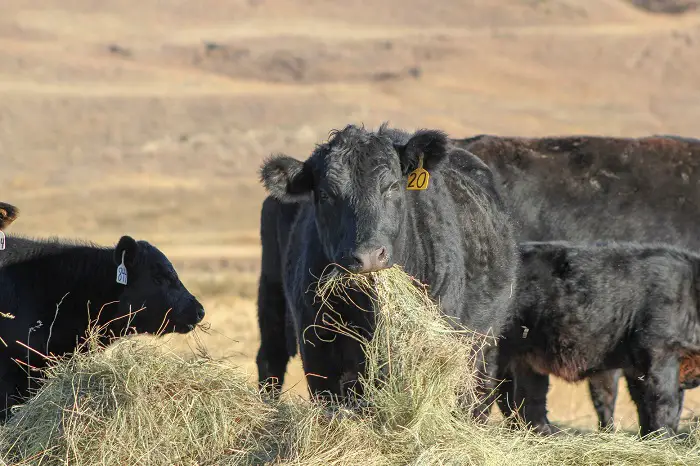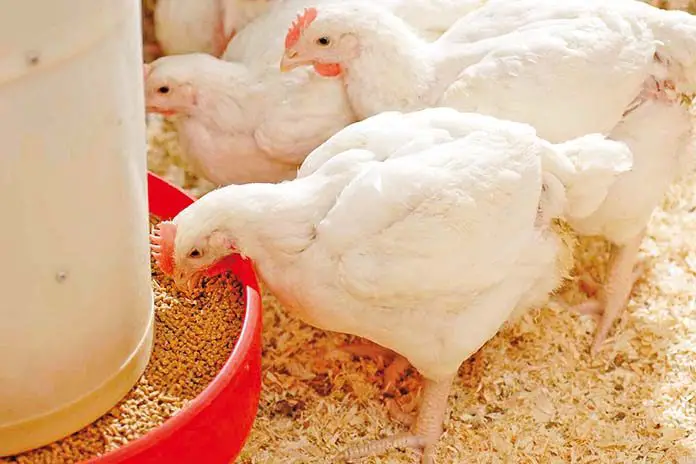Goats are ruminants with a four-chamber stomach capable of digesting high-fiber feeds and forages. Goats will graze and browse depending on available feed resources in the pasture and are quite picky feeders moving from plant to plant in search of the best nutrition. This feeding behavior gave rise to the myth that goats can eat almost anything. Feeding the wrong feed to goats can give raise digestive issues especially bloating which could kill the goat. Goats like other ruminants rely on rumen microbes to break down fiber and release energy through volatile fatty acids which the goat utilizes for maintenance and growth.
Contents
Ruminant Digestion Quick Facts
- Ruminants have a stomach with four compartments namely the rumen, the reticulum, the omasum, and the abomasum
- The microbes present in the rumen are responsible for fermenting the fiber that is fed to the goat and produce volatile fatty acids, vitamins, and amino acids
- Rumen development is determined by diet which determines microbial growth and diversity.
In summary, when feeding goats, we directly aim to feed the rumen microbes which provide the goat with the nutrients it requires in terms of energy, protein and vitamins. The ingredients fed to goats will have a direct bearing on the rumen micro population and what type of species proliferate in the rumen. This has an impact on the normal function of the rumen and what nutrients are produced for the goat to utilize.
Common Feed Ingredients
Forages
Goats being ruminants, they will feed on grass and legume forages for all their nutrient needs, it should be noted that goats are predominantly browsers. Browsers feed mostly on the leaves of shrubs converting this forage is converted into energy and protein by the rumen microbes. So goats can be grazed on pasture successfully without the need for supplementation as long as the pasture is well maintained. Pastures can be sole grass pastures or mixed pastures with grass and legume forages like clovers integrated to supply protein. Goats will also browse on bushes and shrubs mostly legumes to derive protein common browse legumes come from the acacia family. A rough guide is that goats should get at least 12% crude fiber to maintain normal digestive function. In the savanna, goats will feed mostly on browse species that thrive there supplying essential nutrients through dry periods. In periods of limited pastures, hay becomes a very useful alternative both grass and legume hay can be used to feed goats in winter.
Grains
Goats predominantly feed on grass and other forage but can be fed grains as concentrate feed for energy and/or protein, however feeding grain to goats needs attention as too much can cause digestive upsets. Grains are normally fed to improve weight gain and milk production as feeding just a little provides a lot of nutrients. Maize, barley, oats, and soya beans are the common grains fed to goats for energy and protein. Grains can be fed whole or processed depending on the age of the goat and the type of grain being fed. Goats however will perform better on processed grains as they cannot really chew whole grains for proper digestion, Grains should be introduced slowly and gradually to the diet of the goat otherwise an excess can affect the rumen microbe balance and lead to acidosis or bloat. Feeding maize grain for example will lead to excess starch which leads rapid proliferation of microbes that produce a lot of gas in the rumen causing the rumen to press against the chest cavity impeding respiration and blood circulation. Bloat should be considered an emergency situation requiring immediate attention otherwise it can be lethal. Bicarbonate of soda can be fed free access to goats to help alleviate any issues of bloating. How much grain is fed depends on the age, sex, breed, size, physiological status, and climatic conditions in which the goat is raised in.
Supplements
Goats can derive nutrients from a wide range of ingredients as long as these ingredients can be utilized by the rumen microbes to thrive. Energy can be derived from gran milling by-products like maize, wheat, rice bran, and brewers’ grains. Because digestion starts with fermentation in the rumen, having the right mix of microbes in the rumen is essential that is where pro and prebiotics become essential. Probiotics like apple cider vinegar are fed to goats to boost the friendly microbe population in the rumen, balancing rumen pH and hence improving digestion. Molasses is also utilized in feeding goats as the microbes can use the free sugar in molasses to produce fatty acids. Various herbs are utilized by goat farmers as supplements for goat feeding from garlic, chilies, and bark from several trees, these depend on local knowledge and experiences. Goats can get some energy from fats but fats should be fed in limited amounts as they can interfere with fiber digestion. Although goats can produce some of the vitamins they need there is a need to supplement some vitamins and minerals to improve growth performance and reproduction. Calcium and phosphorus can be provided to goats in specially formulated packs. Goats also need salt to improve appetite and this can also be availed in vitamin-mineral supplements usually in the form of blocks.
Non-Protein Nitrogen
Urea is a very useful ingredient for goat feeding providing useful protein for the rumen microbes. Urea is very high in nitrogen content hence must be fed with care to avoid urea poisoning which is an oversupply of urea in the rumen leading to an excess amount of ammonia in the blood.
Compete Commercial Feeds
Various balanced commercial feeds are available for goats at various stages of growth and development. Commercial feeds for milk replacement, fattening, lactation, and maintenance can be procured from commercial manufacturers to feed goats commercially. These diets take the hustle out of the feeding of the goats as they are balanced for all nutrients required by the goat. These feeds can be available in mash or pelleted form depending on the age, needs, and equipment available for the goats being fed.
Feed ingredients for goats are very varied but the choice is determined by the fact that goats are browsing ruminants, the production targets of the farmer, and knowing their nutrient requirements at every stage of their growth. Forage should make up the bulk of a goats’ diet to ensure proper rumen function and digestion.




